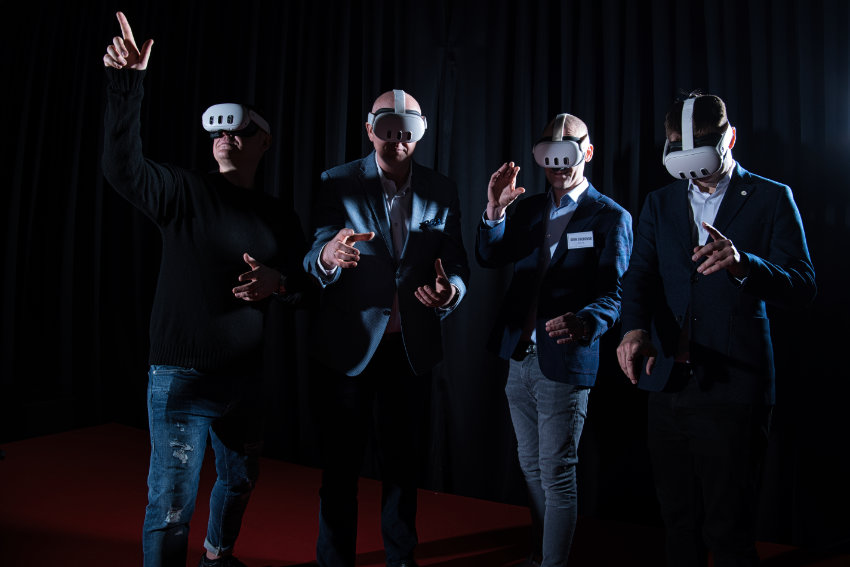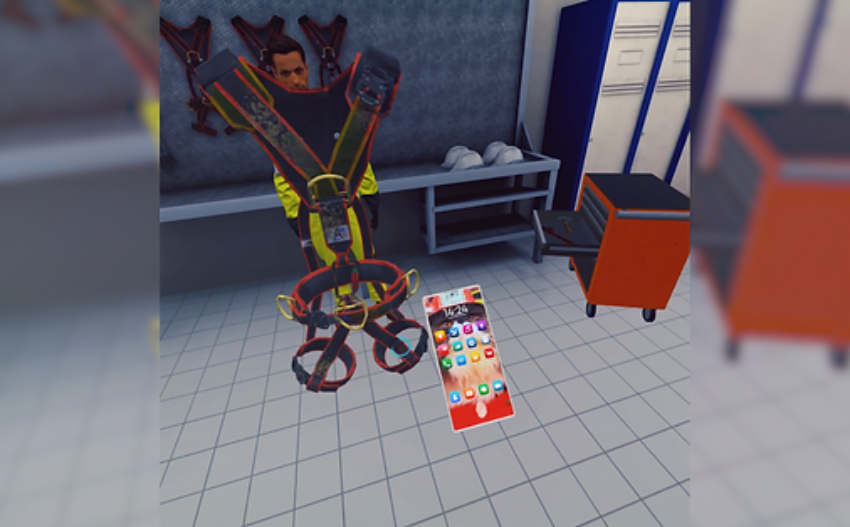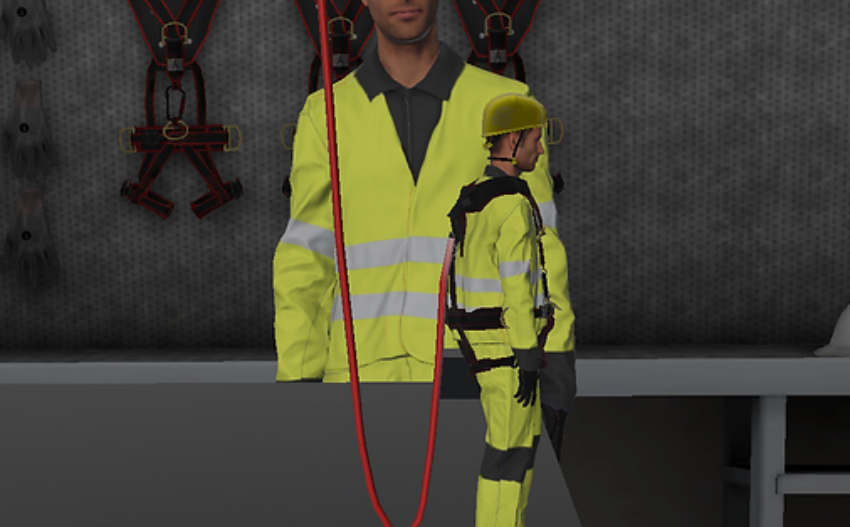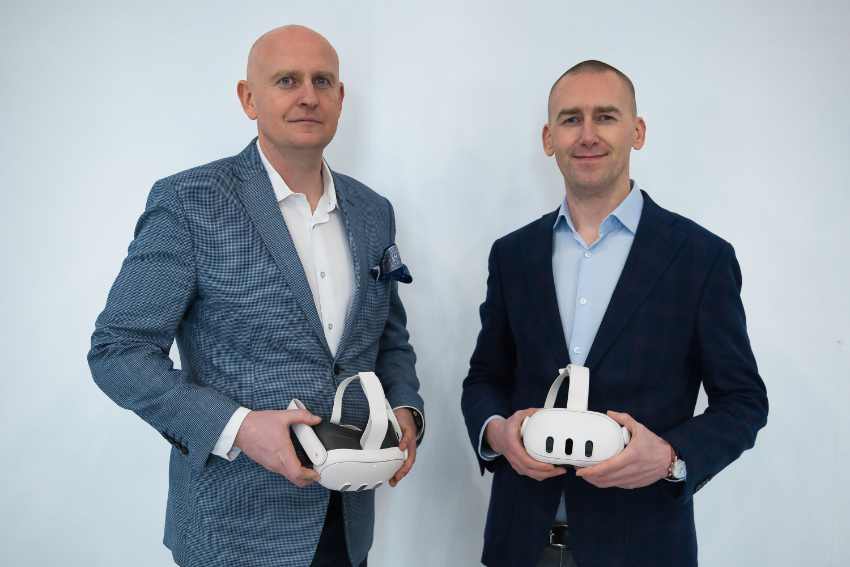EHS VR is a pioneer of innovative training solutions on the Polish market, specializing in virtual reality (VR) technology. The company develops advanced training applications in cooperation with experts in various fields and experienced programmers to create applications that provide comprehensive training in occupational health and safety (OHS), first aid and fire protection.
Interview with Artur Kamiński, CEO of EHS VR.
Easy Engineering: A brief description of the company and its activities.
Artur Kamiński: Annually, we expand our offerings to include specialised training courses, such as working at height or forklift operation, and tailor individual training programmes to the specific needs of companies, taking into account the risks associated with different workplaces. Thanks to the use of virtual reality, our training includes both theoretical and practical elements, delivered through the same application.
Our aim is to use innovative training methods that are not only effective and engaging, but also deliver cost savings, providing our clients with the most effective learning experience. We strive to understand our clients’ needs and challenges in order to deliver comprehensive solutions that improve their work processes and productivity.
E.E: What are the main areas of activity of the company?
A.K: Our main area of activity is the creation of training courses dedicated to safety. Through virtual reality, we can simulate dangerous situations, allowing employees to make mistakes that could cost them their health or life in reality. In addition, our aim is to change traditional, often boring training rooms into interactive, collaborative experiences in virtual reality.

E.E: What’s the news about new products?
A.K: We are currently working on a new system that will allow you to train using our apps on any model of VR glasses, regardless of the manufacturer. All our apps can be used using your own hands without the use of controllers. Of course, if one wishes, one can also train using controllers. However, minimalism is important in training rooms – the fewer devices a trainer has to use, the better the chances of a VR project. In addition, we realise that internet access is not available everywhere, so we are working on offline solutions. One of the innovations is also the introduction of a multiplayer system, which will allow participants to interact together, both between trainees and with the trainer. We are using AI technology for translation and sound generation, so we are able to translate our applications into any language in the world in a short time.
E.E: What are the ranges of products?
A.K: Our training applications are customised to meet the unique requirements of companies and institutions from different sectors. We have implemented more than 25 applications, which are classified by categories such as Health and Safety Training, Specialised Training, Fire Training and First Aid Training. Each of these applications addresses specific challenges and educates employees on how to deal with different situations and prevent risks.

Our solutions are recognised and used in a wide range of industries, from fire and volunteer services, universities and public institutes to small businesses and corporations. In each of these areas, employees are exposed to specific hazards associated with their workplace that require regular training. When it comes to training, which can be vital for saving lives, the most effective methods must be chosen. In this context, we offer training based on virtual reality (VR) technology, which is an innovative and effective learning tool.
E.E: At what stage is the market where you are currently active?
A.K: The rapid development of technology means that companies are increasingly using VR and AR to create personalised and interactive training experiences adapted to individual employees’ needs. Developments in data analytics make it possible to track the progress of participants and continuously adapt training content. The VR and AR training market is becoming increasingly competitive, forcing innovation and increasing the quality of solutions offered. The dynamic development of training applications and platforms is opening up new perspectives for companies, contributing to the further growth and diversification of this sector.

E.E: What can you tell us about market trends?
A.K: The obviousness of the benefits of using virtual reality (VR) technology in employee training has led companies to increasingly invest in the development of VR applications for training. Enhanced VR applications enable the delivery of realistic simulations and training scenarios, leading to more effective employee education. With a growing understanding of the importance of continuous training and development of employees, companies are increasing their investment in modern training methods, including VR technology. Additionally, the rapid technological developments in the availability and capabilities of VR technology are making it increasingly affordable and more accessible to companies, further contributing to the growth of this sector in the education and business market.
E.E: What are the most innovative products marketed?
A.K: The most innovative services in our industry are training using AR and VR technologies, where AI-enhanced AR glasses particularly stand out. In AR solutions, we use the real environment and add simulated objects and machines to it, eliminating the need to create a virtual environment. Interactions with AI-controlled characters are extremely precise, significantly enhancing the quality of training. It is also crucial to use interactions between participants in their real workplace, combining the advantages of AR and AI to provide modern and effective training.

E.E: What estimations do you have for 2024?
A.K: Supplies of augmented and virtual reality (AR/VR) headsets will increase by as much as 46.4 per cent in 2024. – forecasts IDC. This is expected to be the result of the huge economic recovery that analysts expect and the launch of new devices by major brands. This would mark a radical turnaround after a weak 2023, when shipments fell 8.3 per cent year-on-year to 8.1 million units, mainly as a result of the uncertain macroeconomic situation and spending constraints by consumers and businesses. In our segment, we are seeing continued interest in VR training. Many manufacturing companies are simply seeing big time and money savings from VR implementations. In addition, growth will be accompanied by technological changes in companies. VR is not just about training; in this market, the glasses are also used for simulations, meetings and conferences, marketing and sales, and design. With one pair of VR glasses, users have access to a range of applications that can speed up and streamline various corporate processes.

